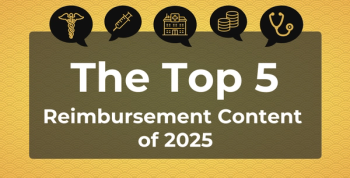
Survival Gains in Multiple Myeloma Highlight Progress and Persistent Disparities
Key Takeaways
- Advancements in chemotherapy and immunotherapy have improved multiple myeloma survival rates, with 5-year relative survival increasing from 37.7% to 60.3% between 2000-2004 and 2015-2019.
- Treatment uptake rose significantly, especially among patients aged 80 and older, with novel therapies increasing from 3.9% in 1999 to 75.5% in 2007.
A comprehensive US analysis showed that progress in multiple myeloma survival has not been shared equally, with significant disparities persisting despite improved therapies.
Over the past 2 decades, advances in chemotherapy and immunotherapy have dramatically improved survival among US adults with
Researchers from the National Cancer Institute and Stanford Medicine analyzed data from 50,288 adults in the SEER cancer registries who were diagnosed with multiple myeloma between 2000 and 2019 and received initial chemotherapy and/or immunotherapy. Of note, the proportion of patients receiving systemic treatment rose from 61.2% in 2000 to 2004 to 72.8% in 2015 to 2019. The study found that overall survival (OS) for patients with multiple myeloma improved significantly in each successive 5-year period from 2000 to 2019. In addition, 5-year relative survival increased from 37.7% in 2000 to 2004 to 60.3% in 2015 to 2019. Improvements were observed across all age, sex, racial/ethnic, and income groups.
The introduction of immunomodulatory drugs, proteasome inhibitors, monoclonal antibodies, and combination regimens has reshaped multiple myeloma treatment over the past 2 decades. Researchers characterized these advances by therapeutic era: 2000 to 2004 marked the arrival of the first proteasome inhibitors; 2005 to 2009 saw widespread use of immunomodulatory agents; 2010 to 2014 added more proteasome inhibitors and immune modulators; and by 2015 to 2019, monoclonal antibodies and combination regimens had become the standard of care.
Treatment uptake increased substantially during this time, particularly among patients aged 80 and older, whose treatment rates rose from 43% to nearly 59% over the study period. Overall, the use of novel therapies jumped from just 3.9% in 1999 to 75.5% in 2007, the authors reported. These therapeutic advances translated into significantly improved outcomes: patients diagnosed in 2015 to 2019 had a 44% lower risk of death compared with those diagnosed in 2000 to 2004 (HR, 0.56; 95% CI, 0.54-0.58).
The authors emphasize that “Despite progressive and significant improvement in patient survival following initial chemo/immunotherapy for multiple myeloma, unmet medical needs persisted among older age groups; males; Black, Hispanic, and Pacific Islander patients; and those living in lower-income counties.”
Compared with patients aged 45-64 years, those aged 65-79 had a 69% higher risk of death (HR, 1.69; 95% CI, 1.59-1.80), and those aged 80 years or older had more than triple the risk (HR, 3.32; 95% CI, 3.08-3.58). Males also fared worse than females across all periods, with an approximately 9% higher risk of death in each period.
Black, Hispanic, and Pacific Islander patients generally experienced worse OS compared with White patients, while Asian patients had similar outcomes. The study’s large, diverse cohort allowed for the first separate analysis of outcomes among Pacific Islander patients, who have historically been grouped with Asians despite evidence of higher cancer mortality in this population.2 As the authors note, “This finding is a critical addition to the literature, as research has historically aggregated these races.”
The results reinforce this point, showing that Pacific Islander patients consistently had the highest mortality risk across all periods, with the most significant disparity observed in 2015 to 2019 (HR, 1.85; 95% CI, 1.40-2.44; P < .0001). Hispanic patients also had an elevated risk of death compared with White patients across all periods, though not all comparisons reached statistical significance. Black patients faced significantly higher mortality in 2000-2004 (HR, 1.08; P = .0093) and 2015 to 2019 (HR, 1.07; P = .0436), though differences in the other periods were not statistically significant.
Disparities were also evident by socioeconomic status. Across all periods, patients living in the lowest-income counties (<$55,000) had significantly higher mortality risks compared with those in the highest-income counties (≥$75,000). Patients from counties with incomes of $55,000 to $64,999 also experienced higher mortality. These disparities were most pronounced in the most recent decade, with those in the lowest-income counties having a 25% higher risk of death in 2010-2014 (HR, 1.25; 95% CI, 1.18-1.33) and a 27% higher risk in 2015-2019 (HR, 1.27; 95% CI, 1.18-1.37) compared with those in the highest-income counties.
The study’s strength lies in its large, representative cohort of US adults treated in both community and academic settings. However, the authors note limitations, including a lack of data on specific regimens, subsequent therapies, and biological disease characteristics.
“Whereas disease and biological factors (e.g., stage, cytogenetic profile, age, comorbidities) are generally considered in multiple myeloma risk assessments, additional research is needed to understand the intersection and influence of social, cultural, psychosocial, behavioral, and related factors so that all adults with multiple myeloma can more equally benefit from therapeutic advances positively contributing to patient survival,” the researchers note. For clinicians, these results highlight the importance of considering both clinical and social factors in multiple myeloma management to ensure all patients benefit equally from treatment advances.
References
1. Dores GM, Vo JB, Schonfeld SJ, et al. Temporal patterns in US population-based patient survival among adults treated with chemotherapy and/or immunotherapy for multiple myeloma, 2000-2020. Br J Haematol. 2025;00:1-9. doi:10.1111/bjh.20192
2. Haque AT, Berrington de González A, Chen Y, et al. Cancer mortality rates by racial and ethnic groups in the United States, 2018-2020. J Natl Cancer Inst. 2023;115(7):822-830. doi:10.1093/jnci/djad069
Newsletter
Stay ahead of policy, cost, and value—subscribe to AJMC for expert insights at the intersection of clinical care and health economics.








